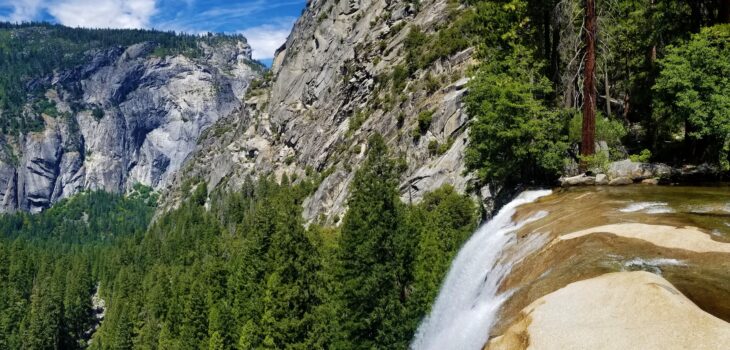 47 Parks
47 Parks
Yosemite in all its Glory: Part I
“Thousands of tired, nerve-shaken, over-civilized people are beginning to find out that going to the mountains is going home; that wildness is a necessity” – John Muir

There’s a reason Yosemite is such a well-known national park: its mountains are unequivocal and its waterfalls are unparalleled. Furthermore, during the country’s most important camping trip, John Muir used Yosemite’s sheer beauty to convince President Theodore Roosevelt to protect the nation’s wilderness.
Just like in Kings Canyon, I didn’t get the true Yosemite experience when I visited in April 2017. Once again, the heavy snowfall resulted in many closed roads, trails, and viewpoints. There was also construction in the Valley, which meant annoying traffic patterns and overcrowding.
Time for second chances.

Through some last-minute serendipitous events, I was able to get a three-day wilderness permit which included access to the famous Half Dome hike. In case you’re not familiar with Yosemite and one of its iconic granite formations, Half Dome hiking permits are often booked months in advance and are difficult to procure a week or two before.*
I could have chosen to do the whole 16.5 mile hike in one day like many individuals do, but I wanted to take my time and relish the whole Yosemite experience. Since many trails were capped at a certain elevation during my prior visit, I was eager to spend at least three days up off the valley floor. Thus, I embarked on a backpacking adventure, meaning my tent, sleeping bag, food, etc. were loaded up onto my back.
I was ready to exist in the backcountry.

I shifted my pack, adjusting the hip straps so the weight was primarily off of my shoulders. It was day one, and I had only gone a mile, but I was feeling the altitude gain. One step at a time, I made my way up the Mist Trail (not to be confused with the Mist Trail in Kings Canyon).
My lungs greedily sucked in air, and I felt the burn all throughout my legs. The trail started out pretty gradual, but now it was tall steps. I was concentrating on moving upwards and not losing balance. The ranger at the trailhead had warned me that many backpackers topple backwards due to the off-kilter center of gravity and the trail’s strenuous nature.

My heart was full and my head was overflowing with happy thoughts. I got a few nods of respect from day hikers who were struggling with the hike despite their lighter loads. Vernal falls was a great resting spot before I shouldered my pack and once again went up, up, and up.
Eventually I reached Little Yosemite Valley, a thousand feet higher than where I’d started my day. This would be where I could camp for the night, within a pine-strewn wooded area along the Merced River from which I’d filter drinking water. I sat in a tired state of contentment before setting up my tent. I then compliantly noticed a mother bear and her cub sauntering through the woods a ways away from me, a testament to my exhaustion. Although only 4 miles, the trail had tuckered me out. I chalked it up to lack of general hiking fitness, the bright sun, and a slight calorie deficit.

Dinner consisted of a dehydrated meal, a cup of tea, and a conversation with another nearby adventurer. I was ready to crawl into my sleeping bag for sleep, but held out until the stars made their appearance. The Milky Way appeared, a giant brushstroke across the dark sky.
Life was good.
Yosemite was excellent.

*Due to covid-19, Yosemite had changed their permit availability, and I was able to enter the lottery to get the paperwork needed to do this classic hike.